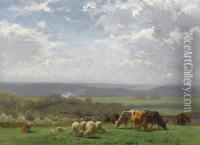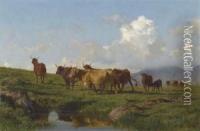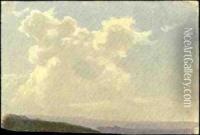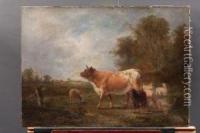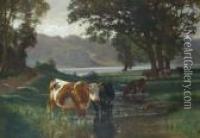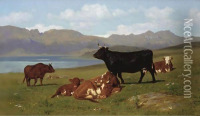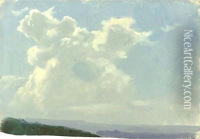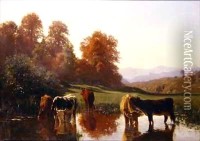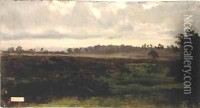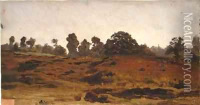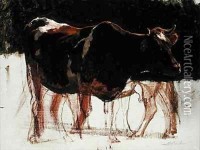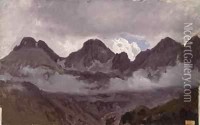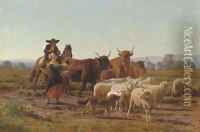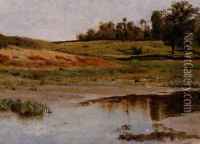Auguste Bonheur Paintings
Auguste Bonheur was a French animalière and landscape painter, born on November 4, 1824, in Bordeaux, France. He was the brother of the famous painter Rosa Bonheur. Auguste Bonheur came from a family of artists, their father being a landscape and portrait painter who provided early training to his children.
Auguste Bonheur's artistic style was strongly influenced by the naturalist and realist movements of the 19th century. He became particularly renowned for his depictions of animals, which were characterized by their detailed realism and the artist's ability to capture the essence of the animals he portrayed. Bonheur focused on pastoral scenes, often highlighting the peaceful coexistence of livestock and the rural landscape. His works were appreciated for their precise technique, harmonious composition, and the sense of tranquility they evoked.
Exhibiting at the Paris Salon from 1845, Auguste Bonheur achieved success and was awarded several medals throughout his career. His works were well-received, and he gained the patronage of art collectors and enthusiasts, which helped to solidify his reputation as a leading animal painter of his time.
Despite his success, Auguste Bonheur often found himself overshadowed by the fame of his sister Rosa, who was considered one of the most accomplished female painters of the 19th century. Nevertheless, he enjoyed a successful career and continued to exhibit his work, which contributed to the popularity of animal painting during the period.
Auguste Bonheur's paintings can be found in various museums and private collections, and they continue to be celebrated for their beauty and historical value. He died on February 21, 1884, in Bellevue-la-Montagne, Haute-Loire, France, leaving behind a legacy of work that continues to be admired by art enthusiasts and historians alike.

